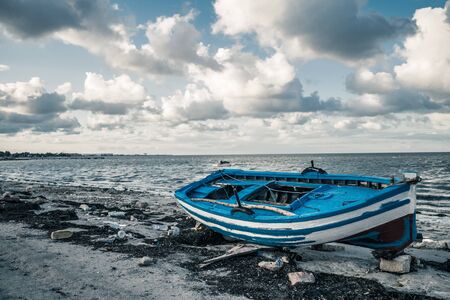Understanding Federal and State Regulations
Before packing your gear for a fishing or camping trip on public lands, its crucial to understand the legal landscape. In the United States, both federal and state agencies manage public lands, and each may have different rules regarding where you can camp, fish, and what activities are allowed. For example, national parks, national forests, Bureau of Land Management (BLM) areas, and state parks often have their own sets of regulations. Some lands require specific permits or passes for camping or fishing, while others might restrict certain practices such as campfires or the use of live bait. Ignoring these rules could lead to fines or being asked to leave your campsite. Because regulations change frequently and can vary widely by location, always check the official websites before your trip: the National Park Service (NPS Camping), U.S. Forest Service (USFS Know Before You Go), Bureau of Land Management (BLM Camping), and your states Department of Natural Resources or Fish & Wildlife site. These resources provide up-to-date information on permits, seasonal closures, bag limits for fishing, fire restrictions, and other essential rules to help you stay safe and legal on your next outdoor adventure.
2. Getting the Right Licenses and Permits
Before you pack up your gear and hit the great outdoors, it’s essential to make sure you have all the necessary licenses and permits for fishing and camping on public lands in the U.S. Rules vary widely depending on location, activity, and even species you intend to catch or areas where you plan to camp. Here’s a step-by-step guide to help you stay compliant and avoid common mistakes.
Step 1: Identify Your Destination and Activities
First, determine exactly where you’ll be fishing or camping (national parks, state parks, national forests, BLM land, etc.) and what activities you’ll be doing (fishing, overnight camping, backcountry hiking). Each land management agency has its own rules.
Step 2: Research Permit Requirements
Visit the official website of the managing agency for your chosen destination. Look for sections on “Permits” or “Recreation.” Here’s a quick reference:
| Activity | Common Managing Agency | Typical Permit/Licensing Needed |
|---|---|---|
| Fishing | State Fish & Wildlife Department | State Fishing License; Special Permits for certain species/waters |
| Camping (Developed Sites) | National Park Service/State Parks | Campsite Reservation; Entrance Pass (sometimes required) |
| Backcountry Camping | NPS/US Forest Service/BLM | Backcountry Permit (often limited/quota-based) |
| Fires (if allowed) | Any Agency | Campfire Permit (especially in California and western states) |
Step 3: Apply Early and Online If Possible
Many permits can be purchased online through state wildlife agencies or recreation.gov. Some high-demand sites use lotteries or quotas—apply as early as possible to secure your spot. Keep digital or printed copies of your permits with you at all times while in the field.
Pro Tip: Double-Check Regulations Before You Go
Laws can change seasonally due to fire danger, wildlife management needs, or droughts. Always verify current regulations right before your trip.
Avoiding Common Pitfalls:
- Assuming one permit covers everything: You often need separate permits for fishing and camping.
- Ignoring local restrictions: Some waters are closed to fishing during spawning seasons; some areas prohibit campfires year-round.
- Not carrying proof: Rangers may ask to see your permit at any time.
- Overlooking youth/senior exemptions: Kids under a certain age or seniors may qualify for free or discounted licenses—check before purchasing.
The bottom line: Do your homework, secure all needed documentation, and keep everything handy so you can relax knowing youre both safe and legal during your adventure.
![]()
3. Following Ethical Outdoor Practices
When fishing and camping on public lands in the U.S., following ethical outdoor practices is just as important as obeying the law. The foundation of responsible recreation lies in the Essential Leave No Trace principles, which are widely respected throughout America’s outdoor community. These guidelines encourage you to pack out all trash, minimize campfire impacts, stick to established trails and campsites, and leave natural objects undisturbed. By practicing Leave No Trace, you help preserve these shared spaces for everyone to enjoy now and in the future.
Respecting wildlife is another key aspect of ethical outdoor behavior. Observe animals from a safe distance, never feed them, and avoid disturbing their habitats—this protects both wildlife populations and your own safety. During fishing trips, use barbless hooks if possible, follow catch-and-release best practices, and always adhere to local regulations regarding protected species.
Lastly, remember that public lands are for everyone. Being a considerate neighbor means keeping noise levels down, respecting quiet hours at campgrounds, giving fellow anglers space along the water, and yielding trails when appropriate. Small courtesies like these foster a friendly atmosphere and ensure all visitors can experience the peace and beauty of America’s outdoors without conflict or disruption.
4. Safety First: Wildlife, Weather, and Emergencies
When fishing or camping on public lands in the U.S., safety should always come first. The outdoors can be unpredictable, so knowing how to prepare for wildlife encounters, changing weather, and emergencies is essential. Here are practical tips and guidelines to help you stay safe:
Wildlife Awareness
Public lands are home to a wide variety of wildlife. While most animals will avoid humans, some may become curious or aggressive if provoked or if food is left unsecured. Follow these tips:
- Store food properly: Use bear-proof containers or hang food away from your campsite if required.
- Maintain distance: Never approach wild animals for photos or feeding.
- Know local species: Learn about the common wildlife in your area and any specific safety advisories (such as bear activity warnings).
Weather Preparedness
The weather can change quickly on public lands. Sudden storms, high winds, or extreme heat are all possible. Before heading out, check local forecasts and be prepared for various conditions. Here’s a quick reference table:
| Weather Condition | Preparation Tips |
|---|---|
| Thunderstorms | Avoid open water and high ground; seek shelter in a vehicle if possible. |
| Extreme Heat | Stay hydrated; wear sunscreen and light clothing; take breaks in shade. |
| Cold/Snow | Dress in layers; keep dry; know signs of hypothermia. |
Basic First Aid Essentials
No matter your experience level, bring a well-stocked first aid kit and know how to use it. Some essentials include:
- Bandages and gauze
- Antiseptic wipes
- Tweezers (for ticks or splinters)
- Pain relievers
If you have allergies or medical conditions, carry necessary medications (like an EpiPen) and inform your group.
Emergency Situations: What to Do
- If someone is injured, assess the situation calmly. Call 911 if there is cell service—many public lands have limited coverage, so consider carrying a satellite phone or personal locator beacon.
- Let someone know your itinerary before you go; it’s a good backup if you’re delayed or lost.
Quick Emergency Response Table
| Situation | Your Action |
|---|---|
| Animal Encounter | Stay calm; back away slowly; do not run. |
| Lost/Disoriented | Stop moving, stay put, signal for help using a whistle or mirror. |
The best trips combine adventure with preparation. By staying aware of your surroundings and planning ahead for wildlife, weather, and emergencies, you’ll enjoy public lands safely and legally.
5. Responsible Use of Fire and Equipment
When fishing and camping on public lands in the United States, it’s essential to respect local fire regulations and use all outdoor equipment responsibly. Wildfires are a serious concern in many regions, especially during dry seasons. Always check with the local ranger station or land management agency for current fire restrictions before lighting any campfire or using stoves and grills. If campfires are allowed, use established fire rings whenever possible and keep fires small. Never leave a fire unattended, and always extinguish it completely—soak it with water, stir the ashes, and feel for lingering heat before leaving your campsite.
Safe equipment use goes beyond fire. When using portable stoves, lanterns, or heaters, read the manufacturer’s instructions carefully and set up gear on stable, clear surfaces away from tents and flammable materials. Dispose of hot coals only in designated areas or pack them out if required by regulations. For anglers, avoid using lead sinkers or other gear that can harm wildlife; opt for non-toxic alternatives instead. Properly store fuels and chemicals to prevent accidental spills that could damage sensitive ecosystems.
Remember, responsible behavior protects not only you but also the environment and future visitors. By following local guidelines and practicing safe habits with fire and equipment, you help ensure America’s public lands remain beautiful and accessible for everyone.
6. Respecting Cultural and Historical Sites
When fishing or camping on public lands in the U.S., you may encounter areas that are sacred to Indigenous nations or sites with historical significance. These locations hold deep cultural, spiritual, or historical value, and it’s essential to approach them with care and respect. Here are some guidelines for being a thoughtful visitor:
Recognize and Follow Posted Rules
Many public lands have signs indicating protected sites or areas of cultural importance. Always read and follow these posted rules, which may include restrictions on access, camping, or fishing. Respect any closures—these are often in place to protect fragile environments or honor tribal sovereignty.
Stay on Designated Trails
Sticking to marked trails helps preserve sensitive archaeological features and prevents unintentional damage. Avoid creating new paths or shortcuts, as this can harm both the environment and historical artifacts.
Do Not Disturb Artifacts or Structures
If you come across rock art, ancient tools, pottery shards, or historic buildings, leave them exactly where you found them. Removing, defacing, or disturbing artifacts is illegal under federal law and disrupts the connection these places have for Indigenous communities.
Honor Cultural Protocols
Some areas may be used for ceremonies or have specific customs regarding photography, noise, or behavior. Look for informational signs or ask local rangers about appropriate conduct if you are unsure. When visiting lands managed jointly with tribes, take extra care to act respectfully—your actions reflect on all visitors.
Avoid Building Fires or Campsites Near Sacred Sites
Even if fire rings are present, avoid making campfires near marked cultural locations. Set up your campsite away from these areas to prevent accidental damage and show respect for their significance.
Be an Ally in Preservation
If you notice vandalism or see someone disturbing a site, report it to authorities rather than intervening directly. Your vigilance helps keep these irreplaceable places safe for future generations of all backgrounds to appreciate.
By following these guidelines, you not only stay within the law but also contribute to a culture of respect and stewardship on America’s shared public lands.


